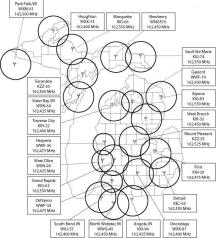|
Tornado Safety
It's up to you!
Each year, many people are killed or seriously injured by tornadoes despite advance warning. Some did not hear the warning while others received the warning but did not believe a tornado would actually affect them. The preparedness information in this brochure, combined with timely severe weather watches and warnings, could save your life in the event a tornado threatens your area. After you have received the warning or observed threatening skies, YOU must make the decision to seek shelter before the storm arrives. It could be the most important decision you will ever make.
Who's most at risk?
- People in automobiles
- The elderly, very young, and the physically or mentally impaired
- People in mobile homes
- People who may not understand the warning due to a language barrier
Back to top
Before and During a Storm
Before the Storm:

- Develop a plan for you and your family for home, work, school and when outdoors.
- Have frequent drills.
- Know the county/parish in which you live, and keep a highway map nearby to follow storm movement from weather bulletins.
- Have a NOAA Weather Radio with a warning alarm tone and battery back-up to receive warnings.
- Listen to radio and television for information.
- If planning a trip outdoors, listen to the latest forecasts and take necessary action if threatening weather is possible.
Map of NOAA Weather Radio stations across Michigan. Source: National Weather Service
Click on image to enlarge (98 kb)
If a Warning is issued or if threatening weather approaches:

- In a mobile home: Get out! Even if your home is tied down, you are probably safer outside, even if the only alternative is to seek shelter out in the open. Most tornadoes can destroy even tied-down mobile homes; and it is best not to play the low odds that yours will make it. If your community has a tornado shelter, go there fast. If there is a sturdy permanent building within easy running distance, seek shelter there. Otherwise, lie flat on low ground away from your home, protecting your head. If possible, use open ground away from trees and cars, which can be blown onto you.
- In a car or truck: Vehicles are extremely dangerous in a tornado. If the tornado is visible, far away, and the traffic is light, you may be able to drive out of its path by moving at right angles to the tornado. Otherwise, park the car as quickly and safely as possible -- out of the traffic lanes. (It is safer to get the car out of mud later if necessary than to cause a crash.) Get out and seek shelter in a sturdy building. If in the open country, run to low ground away from any cars (which may roll over on you). Lie flat and face-down, protecting the back of your head with your arms. Avoid seeking shelter under bridges, which can create deadly traffic hazards while offering little protection against flying debris.
- In a shopping mall or large store: Do not panic. Watch for others. Move as quickly as possible to an interior bathroom, storage room or other small enclosed area, away from windows.
- In a church or theater: Do not panic. If possible, move quickly but orderly to an interior bathroom or hallway, away from windows. Crouch face-down and protect your head with your arms. If there is no time to do that, get under the seats or pews, protecting your head with your arms or hands.
- If caught outdoors: Head for the nearest ditch and assume the tornado safety position.
Tornado safety position. If necessary to take shelter outside, then (1) seek a ditch; (2) get as low to the ground as possible; and (3) cover your head.
Back to top
Tornado Safety in Schools
EVERY School Should Have A Plan!
- Develop a severe weather action plan and have frequent drills,
- Each school should be inspected and tornado shelter areas designated by a registered engineer or architect. Basements offer the best protection. Schools without basements should use interior rooms and hallways on the lowest floor and away from windows.
- Those responsible for activating the plan should monitor weather information from NOAA Weather Radio and local radio/television.
- If the school's alarm system relies on electricity, have a compressed air horn or megaphone to activate the alarm in case of power failure.
- Make special provisions for disabled students and those in portable classrooms.
- Make sure someone knows how to turn off electricity and gas in the event the school is damaged.
- Keep children at school beyond regular hours if threatening weather is expected. Children are safer at school than in a bus or car. Students should not be sent home early if severe weather is approaching.
- Lunches or assemblies in large rooms should be delayed if severe weather is anticipated. Gymnasiums, cafeterias, and auditoriums offer no protection from tornado strength winds.
- Move students quickly into interior rooms or hallways on the lowest floor. Have them assume the tornado protection position (shown at right).
In addition to schools, all institutions should have a tornado plan -- hospitals, nursing homes, and businesses should develop a similar plan.
Back to top
Family Disaster Plan
Families should be prepared for all hazards that affect their area. NOAA's National Weather Service, the Federal Emergency Management Agency, and the American Red Cross urge each family to develop a family disaster plan.
Where will your family be when disaster strikes? They could be anywhere - at work, at school, or in the car. How will you find each other? Will you know if your children are safe? Disasters may force you to evacuate your neighborhood or confine you to your home. What would you do if basic services - water, gas, electricity or telephones - were cut off?
Follow these basic steps to develop a family disaster plan...
- Gather information about hazards. Contact your local National Weather Service office, emergency management or civil defense office, and American Red Cross chapter. Find out what type of disasters could occur and how you should respond. Learn your community's warning signals and evacuation plans.
- Meet with your family to create a plan. Discuss the information you have gathered. Pick two places to meet: a spot outside your home for an emergency, such as fire, and a place away from your neighborhood in case you can't return home. Choose an out-of-state friend as your "family check-in contact" for everyone to call if the family gets separated. Discuss what you would do if advised to evacuate.
- Implement your plan.
- Post emergency telephone numbers by phones;
- Install safety features in your house, such as smoke detectors and fire extinguishers;
- Inspect your home for potential hazards (such as items that can move, fall, break, or catch fire) and correct them;
- Have your family learn basic safety measures, such as CPR and first aid; how to use a fire extinguisher; and how and when to turn off water, gas, and electricity in your home;
- Teach children how and when to call 911 or your local Emergency Medical Services number;
- Keep enough supplies in your home to meet your needs for at least three days. Assemble a disaster supplies kit with items you may need in case of an evacuation. Store these supplies in sturdy, easy-to-carry containers, such as backpacks or duffle bags. Keep important family documents in a waterproof container. Keep a smaller disaster supplies kit in the trunk of your car.
- Practice and maintain your plan. Ask questions to make sure your family remembers meeting places, phone numbers, and safety rules. Conduct drills. Test your smoke detectors monthly and change the batteries at least once a year. Test and recharge your fire extinguisher(s) according to manufacturer's instructions. Replace stored water and food every six months.
A disaster supplies kit should include:
- A 3-day supply of water (one gallon per person per day) and food that won't spoil
- one change of clothing and footwear per person
- one blanket or sleeping bag per person
- a first-aid kit, including prescription medicines
- emergency tools, including a battery-powered NOAA Weather Radio and a portable radio, flashlight, and plenty of extra batteries
- an extra set of car keys and a credit card or cash
- special items for infant, elderly, or disabled family members.
Back to top
|
|


